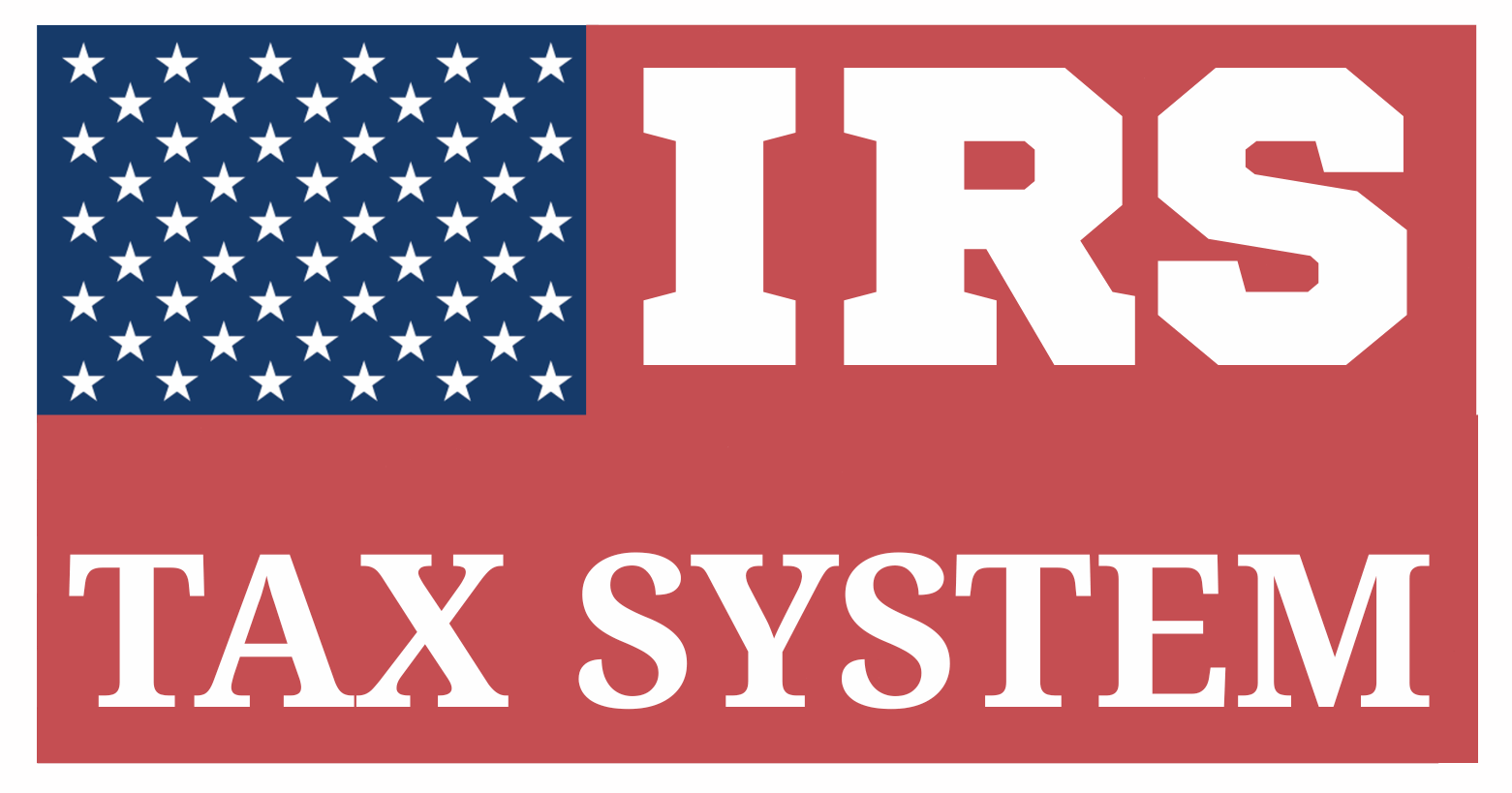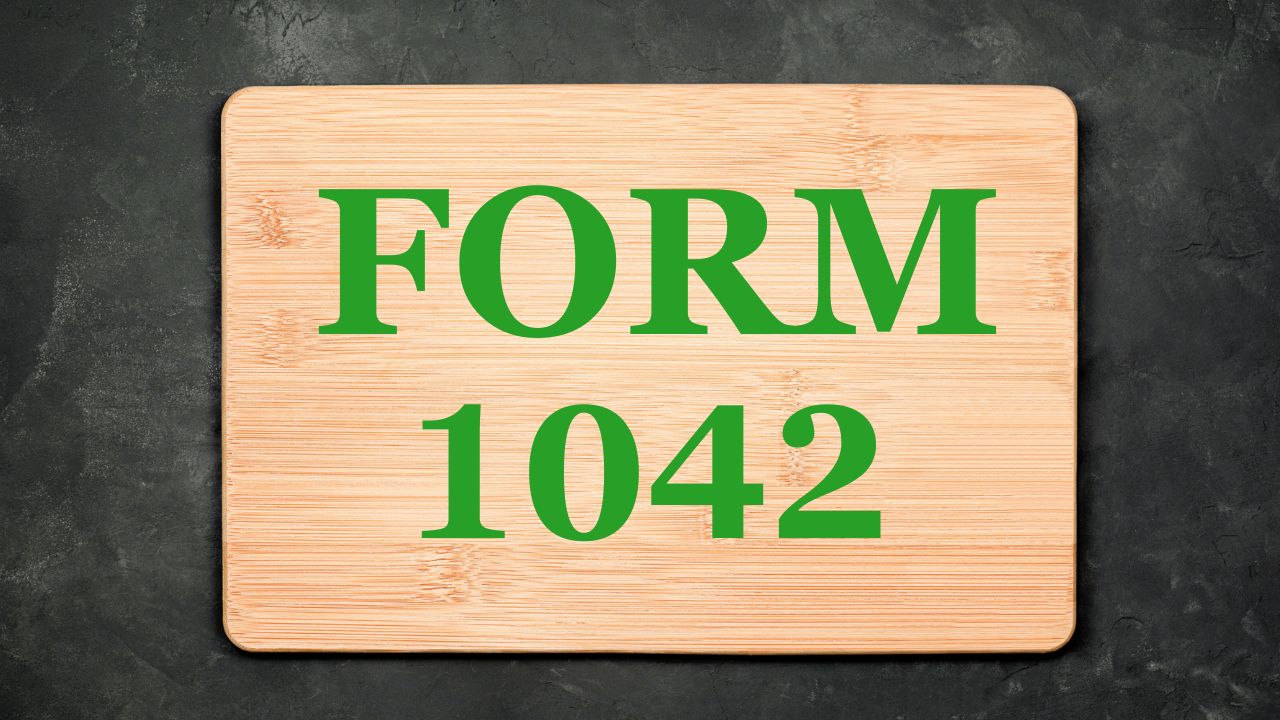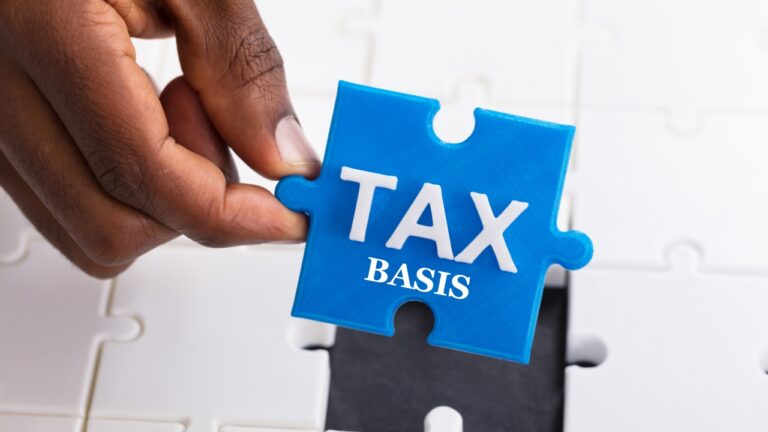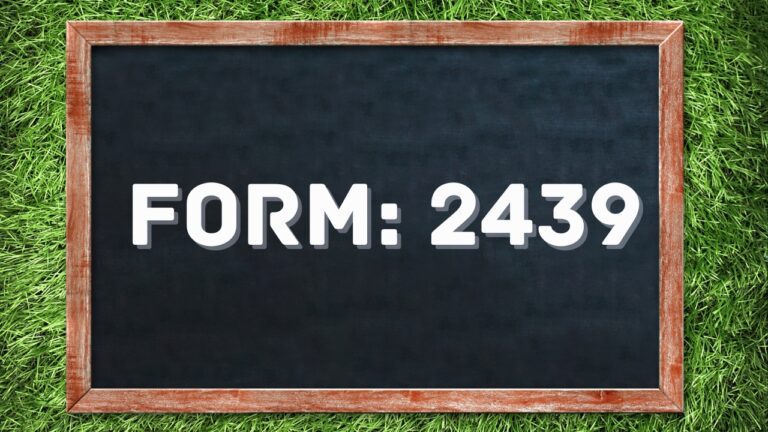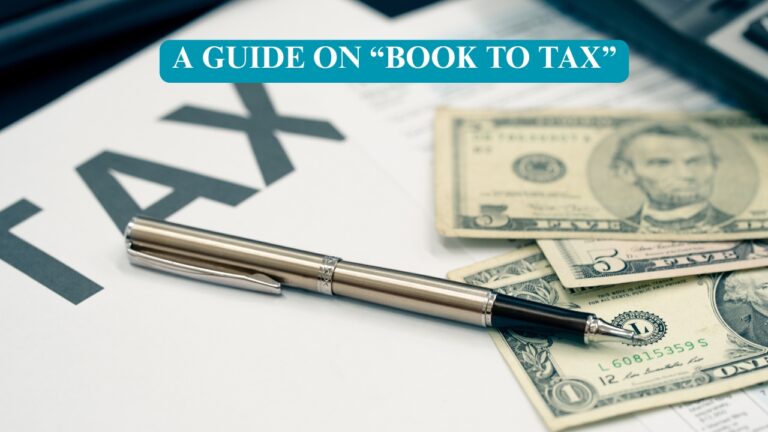Form 1042: Top Review By An Expert
Table of Contents
Form 1042: Annual Withholding Tax Return for U.S. Source Income of Foreign Persons
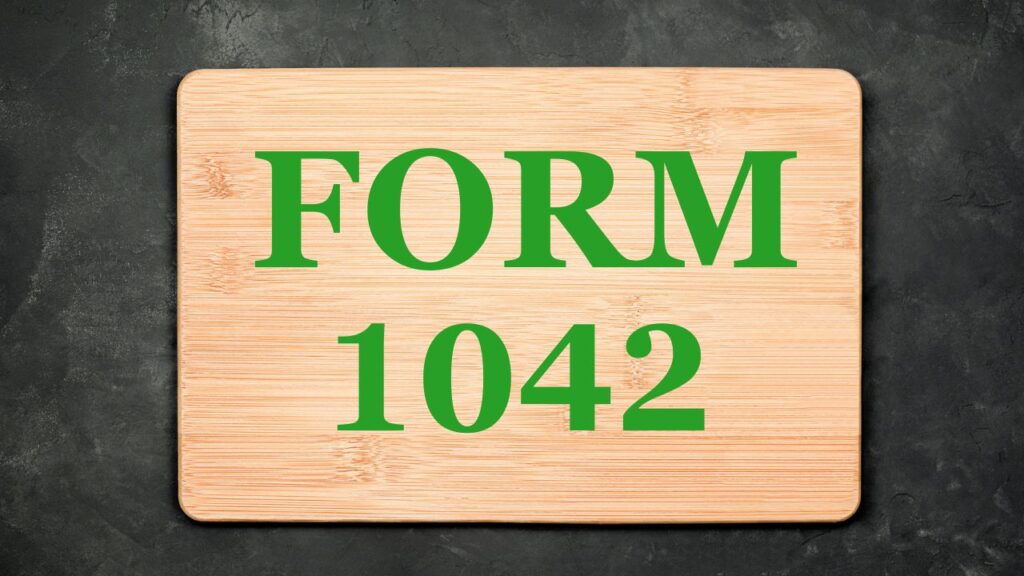
Form 1042 is the annual tax return U.S. withholding agents use to report payments of U.S.-source income to foreign persons and the taxes withheld on those payments.. It is part of the IRS’s mechanism for enforcing the withholding and reporting requirements under Chapter 3 and Chapter 4 of the Internal Revenue Code, which cover U.S. source income payments to non-U.S. persons and the Foreign Account Tax Compliance Act (FATCA), respectively.
Who Must File IRS Form 1042?
Form 1042 must be filed by any individual or entity—known as a withholding agent—who has the responsibility to withhold U.S. tax on income paid to foreign persons. This requirement applies regardless of whether the withholding agent is located in the United States or abroad.
A withholding agent is any person or organization, including businesses, financial institutions, partnerships, trusts, and even government agencies, that makes a payment of U.S.-source income to a non-resident alien individual, a non-U.S. corporation, trust, estate, or any other foreign-based entity. The agent must withhold the appropriate tax and report those amounts annually to the IRS using Form 1042.
Who Qualifies as a Withholding Agent?
The IRS defines a withholding agent broadly. You are considered a withholding agent if you have control, receipt, custody, or payment responsibility for any U.S.-source income that is subject to tax under Chapter 3 or Chapter 4 of the Internal Revenue Code.
Withholding Agents Can Include:
U.S. Individuals
- A landlord paying rent to a foreign property owner
- A freelancer making consulting payments to an overseas contractor
U.S. Businesses
- A corporation paying dividends to foreign shareholders
- A company licensing software and paying royalties to a foreign developer
U.S. Partnerships and LLCs
- Distributing partnership income to foreign partners
- Allocating rental or investment income to foreign members
Trusts and Estates
- Disbursing income (interest, dividends, capital gains) to foreign beneficiaries
Colleges, Universities, and Nonprofits
- Disbursing research grants, academic fellowships, or honoraria to foreign individuals engaged in study or academic work in the U.S
Banks, Brokers, and Financial Institutions
- Distributing U.S.-source investment income—such as interest, dividends, or capital gains—to nonresident investors.
Government Agencies
- Making retirement payments, awards, or compensation to foreign recipients
Foreign Persons or Entities
Even foreign entities can be withholding agents if they:
- Act on behalf of U.S. payors or
- Transfer U.S.-source income to other foreign recipients (as intermediaries or QIs—Qualified Intermediaries)
Example:
An American publishing house pays $100,000 in royalties to a French national for book rights. Even though the company is simply fulfilling a contract, it is acting as a withholding agent because:
- The payment is U.S.-source income,
- The recipient is a foreign person,
- The income is subject to U.S. withholding rules.
Therefore, the company must:
- Request a Form W-8BEN from the author,
- Apply any treaty benefits (if applicable),
- Withhold 0–30%, depending on eligibility,
- File Form 1042 and Form 1042-S.
What Triggers the Filing Requirement for IRS Form 1042?
The IRS requires Form 1042 to report U.S.-source income distributed to foreign persons and the taxes withheld on such payments must be filed when a withholding agent pays certain Distributes income derived from U.S. sources to a foreign recipient and is responsible for withholding tax as per federal requirements.
The filing requirement is triggered primarily by the payment or allocation of income to a non-U.S. person that is subject to U.S. withholding tax rules, under Chapters 3 and 4 of the Internal Revenue Code.
Key Triggers for Filing Form 1042:
1. Payment of U.S.-Source Income to a Foreign Person
- Any U.S.-source income (e.g., interest, dividends, royalties, rents, compensation) paid to a nonresident alien, foreign corporation, foreign trust, or foreign partnership.
- Even if no tax was withheld (due to a treaty exemption or other reason), filing may still be required.
2. Withholding Under Chapter 3 (IRC §§1441–1446)
- You withheld (or should have withheld) tax on FDAP income (Fixed, Determinable, Annual, or Periodic income) paid to foreign persons.
- Common examples: U.S. dividends, royalty payments, scholarship grants, and independent contractor fees.
3. Withholding Under Chapter 4 (FATCA – IRC §§1471–1474)
- You are a participating foreign financial institution (FFI) or other entity subject to FATCA reporting.
- You made payments to nonparticipating foreign entities that required FATCA withholding.
4. Depositing Withheld Tax
- If you withheld tax and made deposits using Form 1042-T, you must file Form 1042 to reconcile your annual reporting.
5. Form 1042-S Filing
- If you issued even a single Form 1042-S to report U.S.-source income paid to a foreign person, you must file Form 1042 to summarize and reconcile those payments.
Additional Filing Triggers for Form 1042
While Form 1042 is primarily associated with withholding on payments to foreign persons, several scenarios trigger a filing requirement even when no U.S. tax was withheld. These include:
1. Treaty-Exempt Payments
If a payment to a foreign person qualifies for exemption under an applicable tax treaty, and no tax is withheld as a result, the withholding agent is still generally required to report the payment on Form 1042. This ensures transparency and proper documentation of the treaty-based exemption.
2. Zero Withholding Situations
When no tax is withheld due to valid IRS documentation — such as Form W-8BEN, W-8ECI, or W-8EXP — which certifies the recipient’s foreign status or entitlement to reduced withholding**, the transaction may still need to be reported. Form 1042 is used to substantiate the reason for non-withholding.
3. Foreign Partnerships Receiving U.S.-Source Income
If a foreign partnership receives U.S.-source income and distributes it to its partners — especially when some or all partners are nonresident aliens or foreign entities — the partnership must file Form 1042 to report the allocation and withholding, if applicable.
4. Grantor Trusts and Foreign Estates
Trustees and executors who allocate U.S.-source income to foreign beneficiaries are considered withholding agents. Even if the trust or estate doesn’t withhold tax due to proper documentation or exemption, they are still responsible for filing Form 1042 to report such distributions.
5. Multiple Withholding Agents
In cases where more than one party is involved in processing or facilitating a payment to a foreign recipient — such as financial institutions, custodians, or intermediaries — each party may bear independent responsibility for withholding and reporting. Each withholding agent that makes, credits, or facilitates a payment may be required to file its own Form 1042.
These filing obligations ensure that the IRS receives a complete record of U.S.-source income payments to foreign persons, even in the absence of withholding, under the broader framework of Chapter 3 and Chapter 4 (FATCA) reporting compliance.
Structure and Instructions to File IRS Form 1042
Form 1042 is filed annually by U.S. withholding agents to report income paid to foreign persons (nonresident aliens, foreign partnerships, corporations, or trusts) and any associated U.S. federal withholding taxes. This form is essential under Chapter 3 (Withholding on Nonresident Aliens and Foreign Entities) and Chapter 4 (FATCA provisions) of the Internal Revenue Code.
I. Key Components of Form 1042
Form 1042 consists of multiple sections designed to capture:
- Part I – General Information: Identifies the filer (withholding agent), EIN, and filing type (original, amended, final).
- Part II – Tax Liability Schedule: Reports monthly U.S.-source income payments to foreign persons and corresponding tax liability by income type.
- Part III – FDAP Income Reconciliation: Matches total income paid and tax withheld with Forms 1042-S and treaty exemptions.
- Part IV – Liability Reconciliation: Confirms that reported tax liability matches actual tax withheld and deposited.
- Signature Section: Includes authorized signature and certification under penalty of perjury.
II. Instructions to Complete Form 1042
Follow these steps when preparing and submitting Form 1042:
1. Identify the Withholding Agent
- Enter the legal name, EIN, and address of the U.S. entity or individual making payments.
- Specify the type of entity (e.g., corporation, trust, partnership).
- Mark the box indicating whether you’re filing an amended or final return.
2. Complete Part I – General Information
This section identifies the withholding agent and their filing status. It includes:
- Name, address, and EIN of the filer
- Type of return (original, amended, or final)
- Calendar year being reported
- Whether the form covers Chapter 3 (nonresident alien withholding), Chapter 4 (FATCA), or both
This form indicates ;
- The total number of Forms 1042-S you’ll file for the year.
- State the total gross income paid to foreign persons and total tax withheld.
- Provide details of the U.S. agent or contact person if applicable.
This section helps the IRS determine who is filing, what kind of payments are involved, and which tax rules apply
3. Complete Part II – Tax Liability by Month
In this section, the filer reports monthly tax liabilities, broken down by:
- Type of income (dividends, interest, rents, royalties, etc.)
- Gross income paid and amount of tax withheld, per month
This form
- Break down your monthly tax liability by:
- Chapter 3 (FDAP income)
- Chapter 4 (FATCA withholding)
- This section ensures the IRS can assess underpayment or overpayment by month.
This part ensures the IRS can track when taxes were withheld and whether deposits were made on time. Late or incorrect payments may trigger penalties.
4. Complete Part III – Reconciliation of Income and Withholding
This section is a summary of all income paid and withholding performed during the year. This section Reports:
- Total U.S.-source Fixed, Determinable, Annual, or Periodic (FDAP) income paid.
- Exemptions (e.g., income excluded under tax treaties or IRS documentation).
- Withholding tax applied on gross income.
The goal is to reconcile the actual withholding with income reported. If you over-withheld, you may be eligible for a refund. Under-withholding may trigger an additional liability or penalty.
5. Complete Part IV – Reconciliation of Payments Made
Here, you tie together all prior sections and:
- Compare the total tax liability from Part II with amounts reported on Forms 1042-S and deposits made
- Ensure that withholding aligns with reported income and payments
The IRS uses this section to verify that the agent correctly withheld and remitted all taxes on time. Any mismatches will need to be explained or corrected.
6. Sign and Date the Return
- The return must be signed by an authorized person (officer, trustee, or representative).
- The signature confirms the return is accurate and complete to the best of your knowledge.
- ncludes a declaration under penalty of perjury that the information is accurate
An unsigned form is considered incomplete and may lead to penalties.
III. Filing Instructions
1. Determine If You’re Required to File
You must file Form 1042 if:
- Any U.S. or foreign person or entity responsible for paying U.S.-source FDAP income to nonresident individuals or entities is considered a withholding agent;
- You withheld or should have withheld federal income tax (under Chapter 3 or Chapter 4 rules — such as FATCA);
- Even if no tax was withheld due to treaty benefits or exemptions, the reporting obligation still applies.
This includes interest, dividends, rents, royalties, pensions, annuities, and more.
2. Collect All Necessary Information
Before completing the form:
- Gather total amounts paid to foreign individuals/entities.
- Review all Forms 1042-S issued.
- Summarize monthly withholding, exemptions applied (e.g., under tax treaties), and deposits made.
- Validate withholding agent’s details (EIN, name, address).
3. Complete Form 1042 Accurately
The form includes the following parts:
- Part I – General information about the filer and type of return.
- Part II – Monthly summary of tax liability.
- Part III – Reconciliation of U.S.-source FDAP income and actual withholding.
- Part IV – Final reconciliation of liability vs. deposits and Form 1042-S totals.
- Signature – Must be signed by a responsible person (e.g., partner, officer, agent).
Each section must be completed clearly and consistently to avoid IRS notices or penalties.
4. Prepare and Attach Form 1042-S
- File Form 1042-S for each foreign payee or recipient of income.
- Form 1042-S must reflect the precise income paid and the tax withheld, consistent with the totals reported on Form 1042.
- Make sure the combined totals from all 1042-S forms align exactly with the figures reported in Parts III and IV of Form 1042.
5. Make Timely Deposits of Withheld Tax
- Use the Electronic Federal Tax Payment System (EFTPS) to deposit tax withheld on payments to foreign persons.
- Deposit deadlines vary:
- Next-day deposit rule applies if $100,000 or more is withheld on a single day.
- Otherwise, deposits are typically made monthly or semiweekly, depending on the amount.
Late deposits may result in penalties.
6. Submit Form 1042 to the IRS
Due Date:
- The deadline to submit Form 1042 is March 15 of the year following the tax year in which the income was paid and withheld.
Where to File (Mailing Address):
If filing by paper, mail Form 1042 to:
Department of the Treasury
Internal Revenue Service Ogden, UT84201-0007
USAElectronic Filing (Preferred for Accuracy):
- If you file 250 or more Forms 1042-S, electronic filing is mandatory.
- Use the FIRE (Filing Information Returns Electronically) System to file Form 1042-S and optionally Form 1042.
- Ensure FIRE account credentials are updated before the deadline.
7. Requesting an Extension
If you need additional time to file:
- File Form 7004 to request an automatic extension of time to file business income, information, and other returns, including Form 1042.
- This grants an automatic 6-month extension, moving the due date to September 15.
- Note: This is an extension to file, not to pay. The full amount of tax owed is still due by March 15, regardless of any filing extension..
8. Maintain Records and Documentation
Keep records for at least 3 years for:
- Proof of withholding
- Forms W-8 (such as W-8BEN, W-8ECI)
- Deposits made via EFTPS
- Form 1042 and related Forms 1042-S
- Any correspondence with the IRS or payees
IV. Supporting Forms and Schedules
When filing IRS Form 1042, withholding agents must also prepare and attach several supporting forms and schedules to fully comply with U.S. tax regulations governing payments to foreign persons. These supplemental documents provide detailed breakdowns, recipient-level data, and reconciliations of income paid and tax withheld.
1. Form 1042-S — Foreign Person’s U.S. Source Income Subject to Withholding
Purpose
Form 1042-S reports each payment of U.S.-source income made to foreign persons (individuals, corporations, partnerships, etc.), including the amount of income, applicable exemptions, and tax withheld.
Key Facts
- A separate 1042-S must be issued for each recipient and each type of income.
- Every Form 1042-S filed must include essential details such as the applicable income code, any exemption code used, the withholding tax rate applied, and full identification of the recipient of the payment.
- All Form 1042-S entries must match totals reported in Part III and IV of Form 1042.
Due Date to Recipients: March 15.
Submit Form 1042 either by mailing a paper return to the IRS or electronically via the FIRE (Filing Information Returns Electronically) System.
2. Form W-8 Series (e.g., W-8BEN, W-8ECI, W-8IMY)
Purpose
These forms certify the foreign status of income recipients and often claim treaty benefits or exemptions from withholding.
When Used:
- Form W-8BEN – submitted by nonresident alien individuals to certify their foreign status and claim reduced withholding rates on U.S.-source income under an applicable tax treaty.
- Form W-8BEN-E – Used by foreign entities.
- Form W-8ECI – Used when income is effectively connected with a U.S. trade or business.
- Form W-8IMY – Used by intermediaries or flow-through entities.
Note: These are not filed with Form 1042 but must be kept on file as documentation for withholding decisions.
3. Form 7004 — Application for Extension of Time
Purpose:
If you cannot file Form 1042 by the due date (March 15), file Form 7004 to request an automatic six-month extension.
Key Point:
Even if the extension is granted, all withheld tax payments must still be made by March 15 to avoid penalties and interest.
4. Schedule Q (if applicable)
Purpose:
While not always required, certain withholding agents under qualified intermediaries (QIs), withholding foreign partnerships, or withholding foreign trusts may be required to include Schedule Q or related statements.
When Used:
- Helps report information under specific IRS agreements involving consolidated or pooled reporting.
5. Deposit Records — EFTPS Confirmations
Purpose:
All tax withheld from payments to foreign persons must be deposited using the Electronic Federal Tax Payment System (EFTPS).
Importance:
EFTPS receipts and confirmation numbers act as proof of compliance and are used to reconcile tax deposits in Part IV of Form 1042.
6. Form 945 — Annual Return of Withheld Federal Income Tax (If Applicable)
Purpose
Used only in limited cases where backup withholding on certain payments to U.S. persons overlaps with payments to foreign recipients.
Typically, backup withholding for foreign persons goes on Form 1042, not Form 945 — but dual obligations can occur in hybrid entities.
7. Form SS-4 — EIN Application Process via This Form
Purpose:
All withholding agents must have a valid Employer Identification Number (EIN) before filing Form 1042.
If a new EIN is needed, submit Form SS-4 to apply in advance of the due date.
V. Penalties and Compliance
- Late Submission Consequences : 5% Monthly IRS Penalty up to 25%
- Failure to File Correct Information Returns (1042-S): $60 to $310 per return, depending on lateness.
- Underpayment Interest: Compounded daily, based on IRS interest rates.
To avoid penalties:
- Submit accurate and timely Forms 1042, 1042-S, and W-8s.
- Maintain records of withholding documentation, payment confirmations, and exemption claims.
Example: U.S. Corporation Making Payments to a Foreign Company
Scenario:
BrightWave Inc., a U.S.-based media company, licenses digital content from Nova Studios Ltd., a foreign company based in Ireland. In 2024, BrightWave pays $100,000 in royalties to Nova.
Tax Treatment:
- The payment is U.S.-source FDAP income (royalties).
- Under the U.S.-Ireland tax treaty, the royalty is subject to 0% withholding if proper documentation is provided.
Forms and Documentation:
- Nova Studios Ltd. Uses Form W-8BEN-E to Certify Non-U.S. Tax Residency.
- BrightWave does not withhold tax due to the treaty exemption.
Form 1042-S:
BrightWave files Form 1042-S showing:
- Income code: 12 (Royalties)
- Gross income: $100,000
- Withholding rate: 0%
- Tax withheld: $0
- Recipient country: Ireland
- Exemption code: 04 (Exempt under tax treaty)
Form 1042 Filing:
Despite no tax withheld, BrightWave must file Form 1042 to report:
- Total U.S.-source income paid to foreign persons
- Tax liability (zero in this case)
- Reconciliation of payments reported on 1042-S
Conclusion
Form 1042 plays a crucial role in ensuring the proper taxation of U.S. source income paid to foreign persons. It helps the IRS track withheld taxes and ensures compliance with international tax withholding rules. Timely and accurate filing is essential to avoid significant penalties and maintain good standing with the IRS.
Frequently Asked Questions (FAQs)
What is IRS Form 1042?
Form 1042 is the annual tax return that withholding agents use to report U.S.-source income paid to foreign persons and the tax withheld on that income. t provides a year-end summary of all income paid, exemptions applied, and taxes withheld.
Who must file Form 1042?
Any withholding agent—U.S. or foreign—that pays U.S.-source income to nonresident aliens, foreign corporations, partnerships, estates, or trusts must file Form 1042 if withholding applies or if a treaty exemption is claimed.
What counts as U.S.-source income for Form 1042 purposes?
Common types include:
-Interest
-Dividends
-Rents
-Royalties
-Scholarships and grants
-Compensation for personal services
These are referred to as FDAP income (Fixed, Determinable, Annual, or Periodic income).
If no tax was withheld, do I still have to file Form 1042?
Yes, if you relied on valid tax treaty documentation (such as Form W-8BEN) to apply zero or reduced withholding, you are still required to file Form 1042 and issue a corresponding Form 1042-S.
What’s the difference between Form 1042 and Form 1042-S?
–Form 1042 is the summary return for the IRS.
–Form 1042-S is the individual report for each foreign recipient
showing the payment and tax withheld.
Both must be filed annually, and the totals on Form 1042 must reconcile with all attached 1042-S forms.
How do I file Form 1042?
You can:
-File electronically via the IRS FIRE (Filing Information Returns Electronically) system if you’re submitting 250 or more 1042-S forms, or
-Mail a paper return to the IRS if eligible.
Do I need to issue a Form 1042-S to each foreign recipient?
Yes. Every foreign person receiving U.S.-source income, even if exempt, must receive a separate Form 1042-S for their share of the income and withholding.
What if I paid U.S.-source income to a foreign partnership or trust?
You must file Form 1042 and allocate withholding among each foreign partner or beneficiary. In some cases, withholding passes through to individual recipients.
Are there penalties for not filing or filing late?
Yes. Failure to timely file Form 1042 or Form 1042-S can result in penalties for late filing, incorrect returns, or underpayment of tax, including interest and fines up to $100 per form or more.
